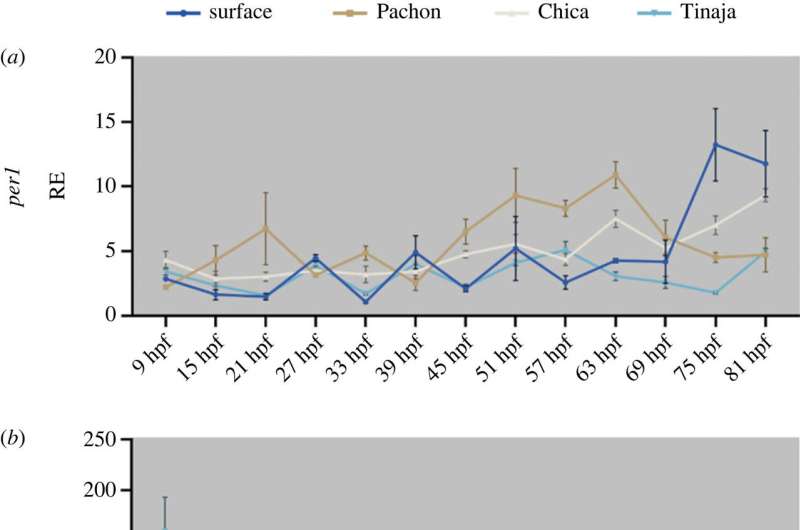July 17, 2023 report
This article has been reviewed according to Science X's editorial process and policies. Editors have highlighted the following attributes while ensuring the content's credibility:
fact-checked
peer-reviewed publication
trusted source
proofread
Biologists determine that blind cavefish cells are responsive to light

A team of marine biologist from James Cook University and University College London has found that blind cavefish living in dark caves in Mexico produce cells that are responsive to light. In their paper published in the journal Proceedings of the Royal Society B, the group describes their study of several samples of blind cavefish.
Prior research has shown that fish living in the waters of a cave complex in parts of Mexico and the U.S. have all evolved from the same species of surface river fish. And because the fish in different caves have evolved independently over differing periods of time, from tens of thousands to millions of years, they have different features relating to adaptations to living in the dark. Those that have had less time to evolve, for example, still have eyes, though most no longer function. Those evolving over longer periods have lost their eyes altogether.
Prior research has also shown that as the fish evolved, they slowly lost their circadian rhythm and many have greatly reduced sleeping times. Most have also developed a stronger sensitivity to vibrations, allowing them to sense movement in the water around them—useful for both navigation and finding food.
Not much else is known about the fish because they are notoriously difficult to study. Still, the team working on this new research wondered how the fish changed as they lost their internal daily cycle. To find out, they turned to Astyanax mexicanus, a blind cavefish species amenable to reproducing in a lab setting. They obtained samples grown from fish captured in multiple caves by other research teams and mated them to produce more specimens for their study. They then collected cell samples and tested them for sensitivity to light. They also compared what they found to the species from which all the others descended.
In testing the cells, the research team found several of the fish species produced cells that were sensitive to light, despite being completely blind. They note that the originating species had the strongest sensitivity. The researchers also found that some of the fish species were able to entrain their internal clocks back to a light/dark cycle.
More information: Inga A. Frøland Steindal et al, Blind fish have cells that see light, Proceedings of the Royal Society B: Biological Sciences (2023). DOI: 10.1098/rspb.2023.0981
Journal information: Proceedings of the Royal Society B
© 2023 Science X Network




















